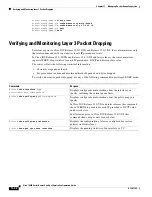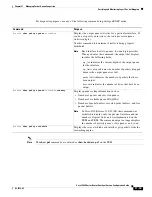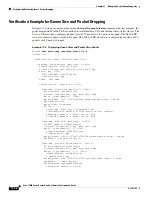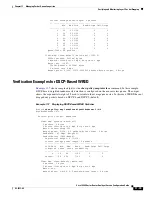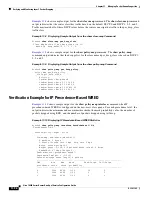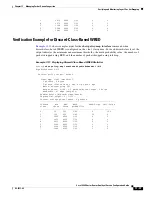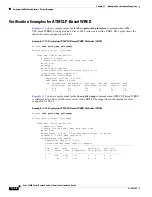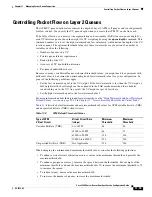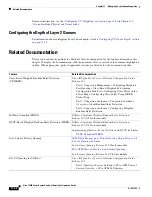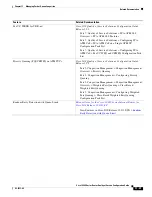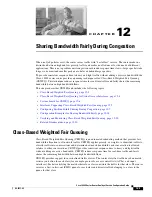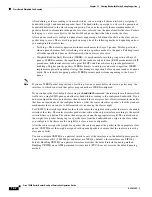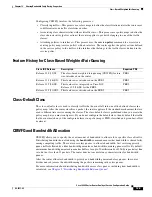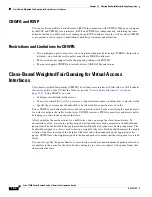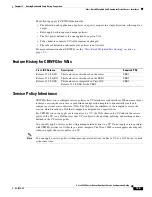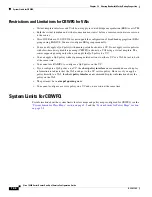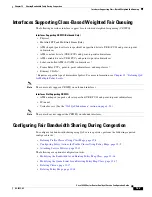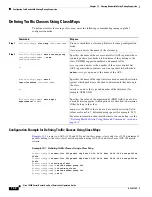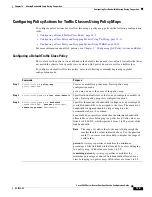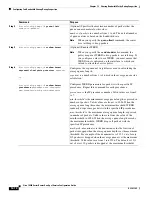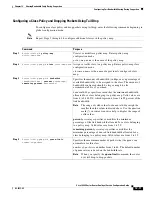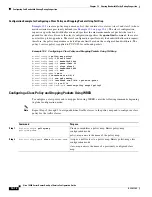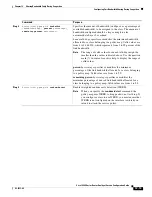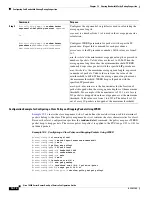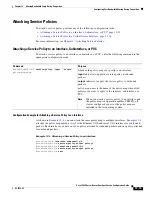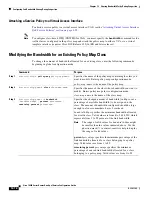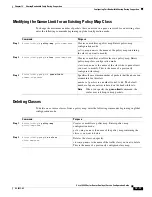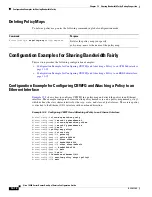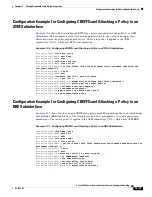
12-4
Cisco 10000 Series Router Quality of Service Configuration Guide
OL-7433-09
Chapter 12 Sharing Bandwidth Fairly During Congestion
Class-Based Weighted Fair Queuing for Virtual Access Interfaces
CBWFQ and RSVP
You can use Resource Reservation Protocol (RSVP) in conjunction with CBWFQ. When you configure
both RSVP and CBWFQ for an interface, RSVP and CBWFQ act independently, exhibiting the same
behavior that they would if each were running alone. RSVP continues to work as it does when CBWFQ
is not present, even in regard to bandwidth availability assessment and allocation.
Restrictions and Limitations for CBWFQ
•
If you configure a policy map class to use weighted random early detection (WRED), the interface
to which you attach the service policy cannot have WRED configured.
•
The router does not support traffic shaping and policing with CBWFQ.
•
The router supports CBWFQ on variable bit rate (VBR) ATM connections.
Class-Based Weighted Fair Queuing for Virtual Access
Interfaces
Class-based weighted fair queuing (CBWFQ) for virtual access interfaces (VAIs) allows a VAI to inherit
the service policy of the VC that the VAI uses (see the
“Service Policy Inheritance” section on
page 12-5
). Using CBWFQ, you can:
•
Configure user-defined traffic classes
•
Use access control lists (ACLs), protocols, or input interface names to define how to classify traffic
•
Specify the exact amount of bandwidth to be allocated for a specific class of traffic
To use CBWFQ, you define traffic classes based on match criteria. Packets satisfying the match criteria
for a class constitute the traffic for that class. CBWFQ reserves a FIFO for each class and directs traffic
belonging to a class to the queue for that class.
After you define the match criteria for a traffic class, you can assign the class characteristics. To
characterize a class, you create a policy map and assign each class such parameters as bandwidth and
queue limit. The bandwidth is the guaranteed bandwidth delivered to the class during congestion. The
bandwidth assigned to a class is used to derive a weight for the class. Each packet that meets the match
criteria of the class is assigned the weight of the class and is then enqueued in the appropriate class
queue. CBWFQ uses the weights assigned to the queued packets to ensure that the class queue is serviced
fairly.
You can also specify the queue limit for a class to indicate the maximum number of packets allowed to
accumulate in the queue for the class. Packets belonging to a class are subject to the queue limits that
characterize the class.

